
Understanding Raw Vs Decarbed Cannabis
Cannabinoids are the most well-known compounds produced by the cannabis plant, but did you know they can be split up into two major categories: acidic vs decarbed? Find out what you need to know about cannabinoid acids and decarboxylated cannabinoids so you can determine the best type of cannabis for you.
Cannabis is a complex plant that contains over 400 different active chemicals. Among them, cannabinoids are arguably the most well-known, but there's still a ton we don't know about how they work and affect our bodies.
In this article, we'll take a look at cannabinoid acids vs decarboxylated cannabinoids, exploring their differences, benefits, mechanisms of action, and much more.
Raw vs decarbed cannabis: What's the difference?
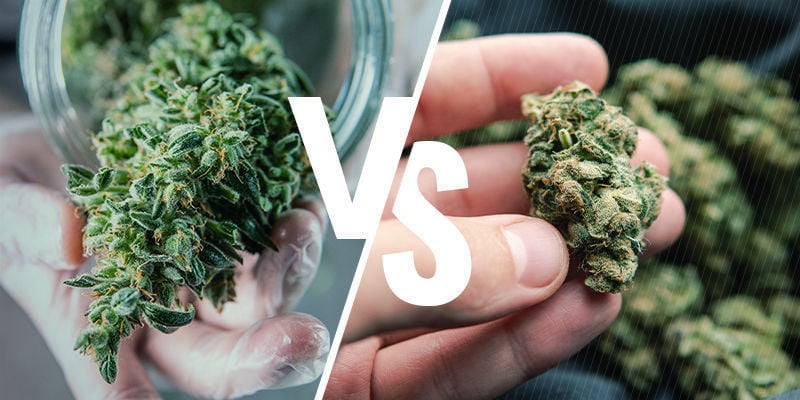
Raw cannabis refers to cannabis plant matter that hasn't yet been dried and cured. It's either alive on the plant itself, or freshly harvested. Drying and curing the buds helps to extend their shelf life and preserve their flavours and aromas. If you were to skip the drying and curing process and store raw, freshly harvested buds in a container, they'd spoil in just a few days, as moisture buildup in and around the flowers creates a breeding ground for bacteria and mould.
Moreover, the drying and curing process helps to prepare cannabis flowers for consumption by kick-starting a chemical process known as decarboxylation (or "decarbing"). This process essentially breaks down certain chemical bonds in the resin of the flowers, thereby "activating" many of the cannabinoids that give cannabis its unique effects.
A quick introduction to cannabinoids
Among the 100+ cannabinoids in cannabis, the most abundant and well-known are THC and CBD. As such, these two cannabinoids have received the lion’s share of research.
While it might sound surprising, THC, CBD, and any of the other secondary compounds you might be familiar with (CBG, CBC, CBN, etc.) are not naturally present in live or raw cannabis plants. Instead, they are gradually synthesised from cannabinoid acids through enzymatically catalysed processes.
What are raw (or acidic) cannabinoids?
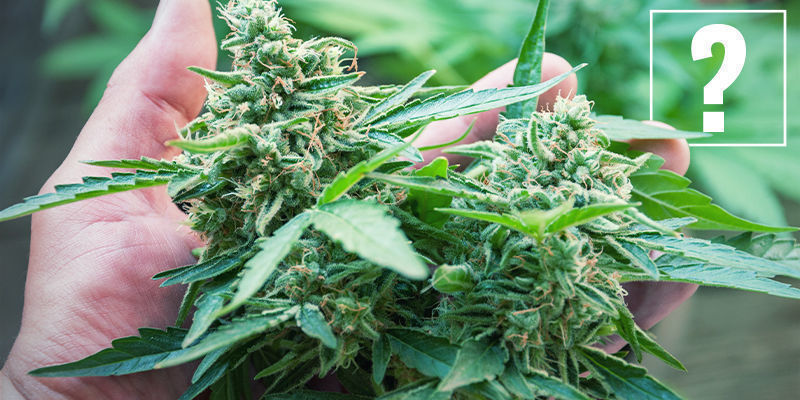
Cannabinoid acids are the first cannabinoids produced by live cannabis plants. Cannabinoid biosynthesis starts with CBGA, or cannabigerolic acid. CBGA is produced in the trichomes of flowering weed plants and helps to regulate cell necrosis and natural leaf pruning—two key processes that help flowering cannabis plants focus their energy toward developing buds.
While CBGA was first isolated in the 1960s by researchers in Israel, it hasn't attracted a lot of attention since, meaning there's still a lot we don't know about this compound's function and how it affects humans (Hazekamp et al., 2004). Alongside CBGA, the other main cannabinoid acid biosynthesised by live cannabis plants is CBGVA, or cannabigerovarinic acid, which has been the focus of even fewer studies.
As flowering cannabis plants mature, CBGA and CBGVA synthesise to produce 6 major cannabinoid acids: CBGA synthesises into THCA (tetrahydrocannabinolic acid), CBDA (cannabidiolic acid), and CBCA (cannabichromenic acid), while CBGVA synthesises into THCVA (tetrahydrocanabivarinic acid), CBDVA (cannabidivarinic acid), and CBCVA (cannabichromevarinic acid).
The concentration of these cannabinoid acids in harvested plants varies depending on genetics, how they are grown, and the point at which they are harvested. Finally, as the buds dry post-harvest, the cannabinoid acids they contain start to slowly decarboxylate into non-acidic cannabinoids.
Sources of cannabinoid acids
Cannabinoid acids are typically found in the highest concentrations in trichomes found on:
- Young cannabis flowers (highest concentration)
- Sugar leaves (medium concentration)
- Fan leaves (lowest concentration)
Some of the most popular ways to use these live plant parts are to incorporate them into fresh juices, smoothies, and salads.
What are decarbed (or activated) cannabinoids?
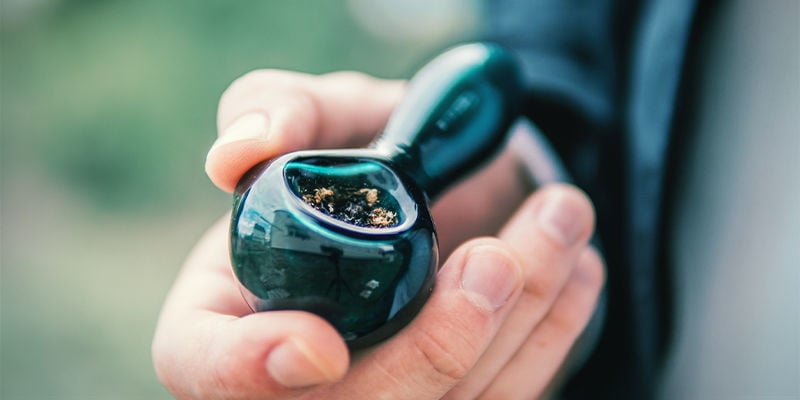
Decarbed, or activated, cannabinoids are the successors of the acidic cannabinoids we mentioned earlier. The process of decarboxylation relies on heat to remove one carbon atom from the carbon chains in cannabinoid acids, turning them into their non-acidic counterparts. During decarboxylation:
- CBCA becomes CBC
- CBCVA becomes CBCV
- CBDA becomes CBD
- CBDVA becomes CBDV
- CBGA becomes CBG
- THCA becomes THC
- THCVA becomes THCV
The process of decarboxylation occurs naturally at a very gradual pace during the drying and curing process. However, the bulk of it takes place when we light, vaporize, or cook cannabis before consuming it. As the heat from your lighter, vaporizer, stove top, or oven penetrates the buds, it breaks down carbon chains in the cannabinoid acids, altering their chemical structure and releasing CO₂ in the form of smoke or vapor.
Sources of activated cannabinoids
Decarbed cannabinoids aren't naturally present in live cannabis plants. Instead, they're synthesised when we:
- Smoke or vape dried cannabis flowers
- Cook with cannabis
- Process dried flowers into extracts or concentrates
Acidic vs decarbed cannabinoids: Which is better?
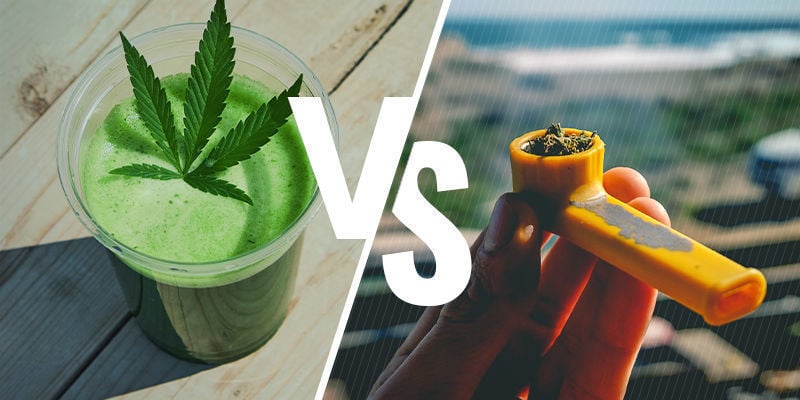
Whether you prefer acidic or activated/decarbed cannabinoids largely depends on why you use cannabis. If your main aim is to get high or stoned, decarboxylated cannabinoids—specifically THC—will get you there. THC has a high affinity for CB1 receptors, a key component of the human endocannabinoid system. In binding to these receptors, THC produces the iconic high we associate with cannabis. No other plant-based cannabinoid (decarbed or acidic) has such a high affinity for CB1 receptors, which is why THC is commonly thought of as "the cannabinoid that gets you high".
Apart from recreational use, THC and other activated cannabinoids, including CBD and CBG, are also utilised for their non-psychotropic effects, and have undergone increasing study in recent years to determine their pharmacological potential. Studies are ongoing, but decarbed cannabinoids have been pitched against numerous conditions of the mind and body.
On the other hand, cannabinoid acids may prove enticing for people who want to use cannabis without getting high. While there has been very little research into acidic compounds like CBGA, CBDA, and THCA, the growing trend of "green juicing" is drawing attention to these cannabinoids. Some cannabis researchers, including the acclaimed Dr Ethan Russo, for example, have also spoken openly about the unique potential benefits of cannabinoid acids (Project CBD, 2020).
While more research is needed to fully understand their mechanisms of action and potential benefits, cannabinoid acids are currently being explored for their impact on:
- Pain and inflammation (Palomares et al., 2020)
- Bacteria (Martinenghi et al., 2020)
- Immune response (van Breemen et al., 2022)
- Fungal pathogens (Radwan et al., 2009)
To provide a bit more insight into the differences between decarbed and acidic cannabinoids, let’s take a closer look at their chemical structure, application, effects, and safety.
Chemical structure
Due to their distinct chemical structures, acidic and decarbed cannabinoids likely act on different receptor cells in the body, or at least to different degrees, and thus suit different needs and preferences. At the same time, researchers are currently exploring if combining cannabinoid acids with activated cannabinoids could provide a double-pronged approach to dealing with various issues.
Application
One of the simplest and easiest ways to consume decarbed cannabinoids is to smoke or vape cured cannabis flowers or extracts (which remains illegal in most parts of the world). Cannabinoid acids, on the other hand, need to be sourced from live plant material, which can be eaten raw or juiced. While this method might be more discreet than lighting up a joint or bong, it requires access to live cannabis plants, which also remains illegal throughout most of the world.
Pharmacological effects
As mentioned, our understanding of cannabis is still in its infancy. That said, decarbed cannabinoids have been the focus of many more studies than cannabinoid acids. While there is little concern about the safety of cannabinoid acids, the fact remains that we know far less about these compounds than their non-acidic counterparts, and should therefore err on the side of caution when it comes to speculating about any potential effects.
Safety
Cannabinoids are known to have very low toxicity, but that doesn’t mean all of them are safe for everyone to take. Hence, while cannabinoids, both decarbed and acidic, are commonly taken for recreational and wellness purposes, more research is needed to verify this before any case-specific advice can be provided.
Acidic, decarbed, and synthetic cannabinoids: Understanding the differences
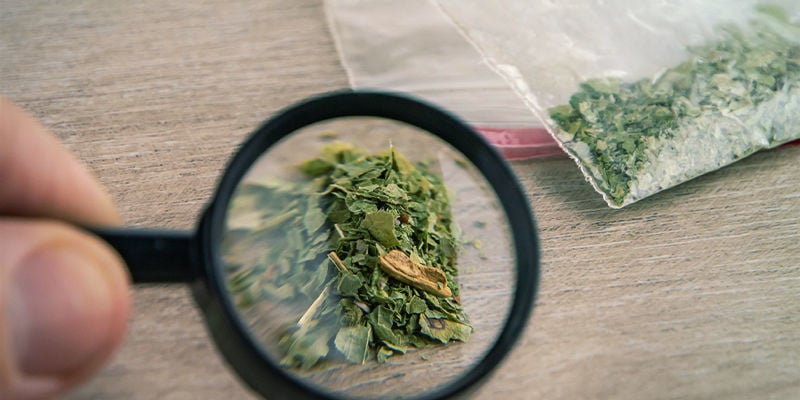
Acidic, activated, and synthetic cannabinoids (those created in a laboratory setting) all have unique chemical structures, potential effects (both positive and negative), and uses. The world of cannabis is vast, and we're only scratching the surface when it comes to understanding the many fascinating facets of this ancient plant. As research into cannabis and its compounds continues to emerge, so will exciting and safe ways to use the plant for holistic and recreational purposes.
- Project CBD. (2020, January 11). LIVE INTERVIEW: Ethan Russo, MD talks about CBG, cannabinoid acids, and the global CBD phenomenon [VIDEO]. Youtube. - https://www.youtube.com
- Hazekamp, A., Simons, R., Peltenburg‐Looman, A., Sengers, M., van Zweden, R., & Verpoorte, R. (2004). Preparative isolation of cannabinoids from cannabis sativa by centrifugal partition chromatography. Journal of Liquid Chromatography & Related Technologies, 27(15), 2421–2439. - https://www.tandfonline.com
- Laura Daniela Martinenghi, Rie Jønsson, Torben Lund, & Håvard Jenssen. (2020, June). Isolation, Purification, and Antimicrobial Characterization of Cannabidiolic Acid and Cannabidiol from Cannabis sativa L. Biomolecules 10(6). - https://www.ncbi.nlm.nih.gov
- Palomares B, Ruiz-Pino F, Garrido-Rodriguez M, Eugenia Prados M, Sánchez-Garrido MA, Velasco I, Vazquez MJ, Nadal X, Ferreiro-Vera C, Morrugares R, Appendino G, Calzado MA, Tena-Sempere M, & Muñoz E. (2020 Jan). Tetrahydrocannabinolic acid A (THCA-A) reduces adiposity and prevents metabolic disease caused by diet-induced obesity. Biochemical Pharmacology 171(11). 10.1016/j.bcp.2019.113693 - https://pubmed.ncbi.nlm.nih.gov
- Radwan MM, Elsohly MA, Slade D, Ahmed SA, Khan IA, & Ross SA. (05/22/2009). Biologically Active Cannabinoids from High-Potency Cannabis sativa. Journal of Natural Products 72(5). 10.1021/np900067k - https://pubmed.ncbi.nlm.nih.gov
- van Breemen RB, Muchiri RN, Bates TA, Weinstein JB, Leier HC, Farley S, & Tafesse FG. (01/28/2022). Cannabinoids Block Cellular Entry of SARS-CoV-2 and the Emerging Variants. Journal of Natural Products 85(1). 10.1021/acs.jnatprod.1c00946 - https://pubmed.ncbi.nlm.nih.gov
-
 6 min
27 October 2023
How To Decarb Your Cannabis: 3 Methods
Decarboxylation (Dee-car-BOX-ee-lay-shun) is the process of activating cannabis by applying sufficient heat. It causes the cannabinoids in weed to change from their inactive storage form to their...
6 min
27 October 2023
How To Decarb Your Cannabis: 3 Methods
Decarboxylation (Dee-car-BOX-ee-lay-shun) is the process of activating cannabis by applying sufficient heat. It causes the cannabinoids in weed to change from their inactive storage form to their...
-
 3 min
4 February 2020
Cannabinoids Are Not Unique To Cannabis
If you thought cannabinoids were exclusive to cannabis, think again! There are many plant species that contain cannabinoids, terpenes, and cannabimimetics. With cannabinoid-based treatments...
3 min
4 February 2020
Cannabinoids Are Not Unique To Cannabis
If you thought cannabinoids were exclusive to cannabis, think again! There are many plant species that contain cannabinoids, terpenes, and cannabimimetics. With cannabinoid-based treatments...
-
 3 min
5 October 2019
What Is CBDA And How Is It Different From CBD?
Cannabidiolic acid, otherwise known as CBDA, is a cannabinoid found within raw cannabis. Upon heat exposure or prolonged drying, CBDA is transformed into CBD. However, CBDA has been shown to have...
3 min
5 October 2019
What Is CBDA And How Is It Different From CBD?
Cannabidiolic acid, otherwise known as CBDA, is a cannabinoid found within raw cannabis. Upon heat exposure or prolonged drying, CBDA is transformed into CBD. However, CBDA has been shown to have...
-
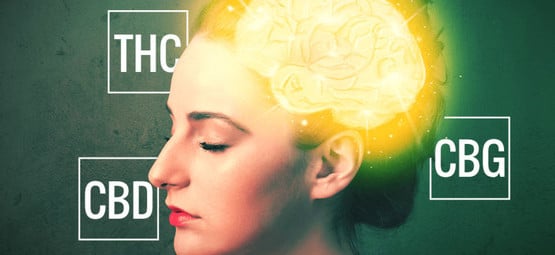 2 min
13 June 2019
CBD, THC & CBG - Exploring Cannabinoids
Cannabis contains over 480 active compounds, 80 of which are only found in cannabis. This is a lot of different variables that affect the body, and it partly why there is always new scientific...
2 min
13 June 2019
CBD, THC & CBG - Exploring Cannabinoids
Cannabis contains over 480 active compounds, 80 of which are only found in cannabis. This is a lot of different variables that affect the body, and it partly why there is always new scientific...





 United States
United States











